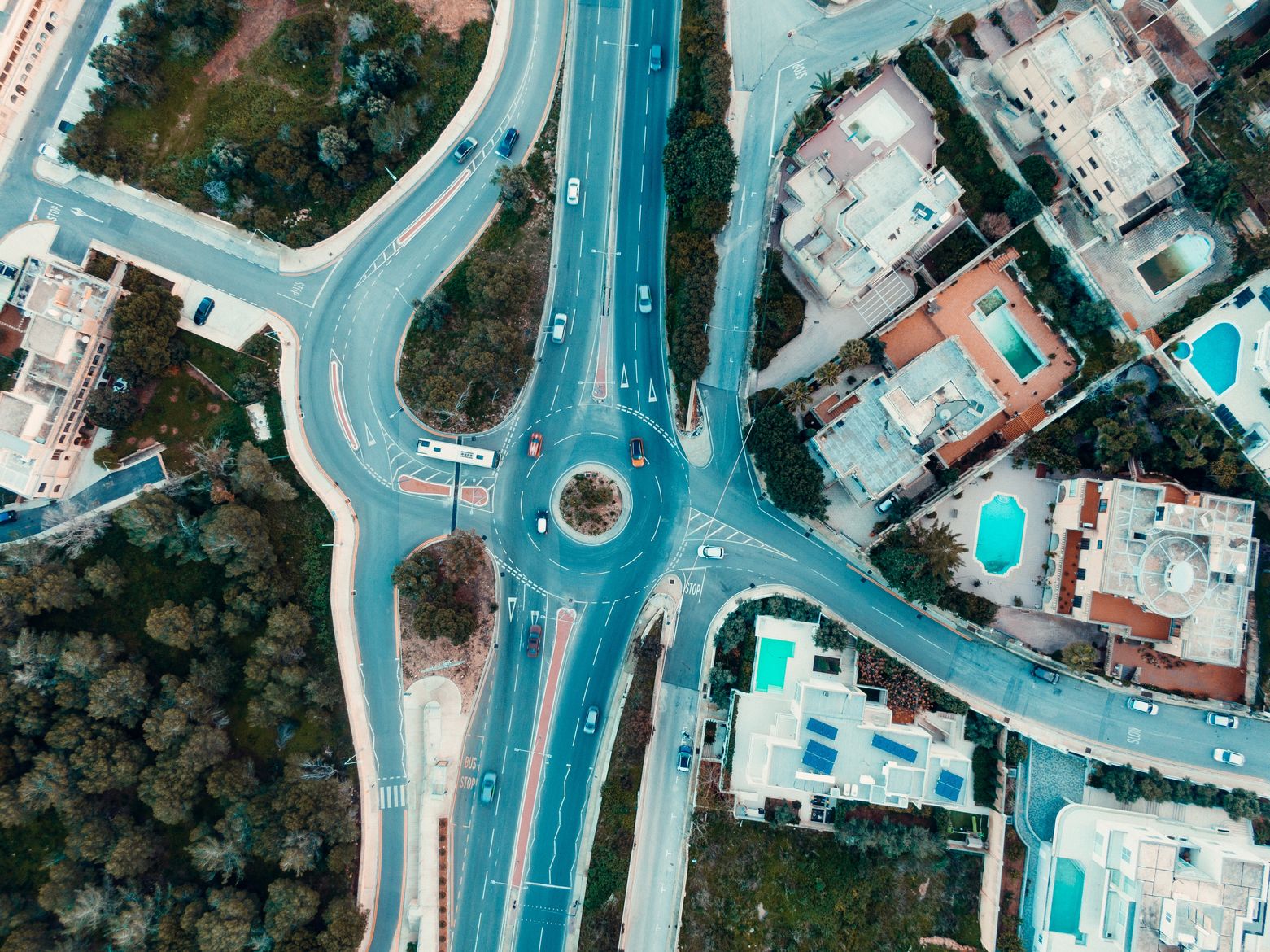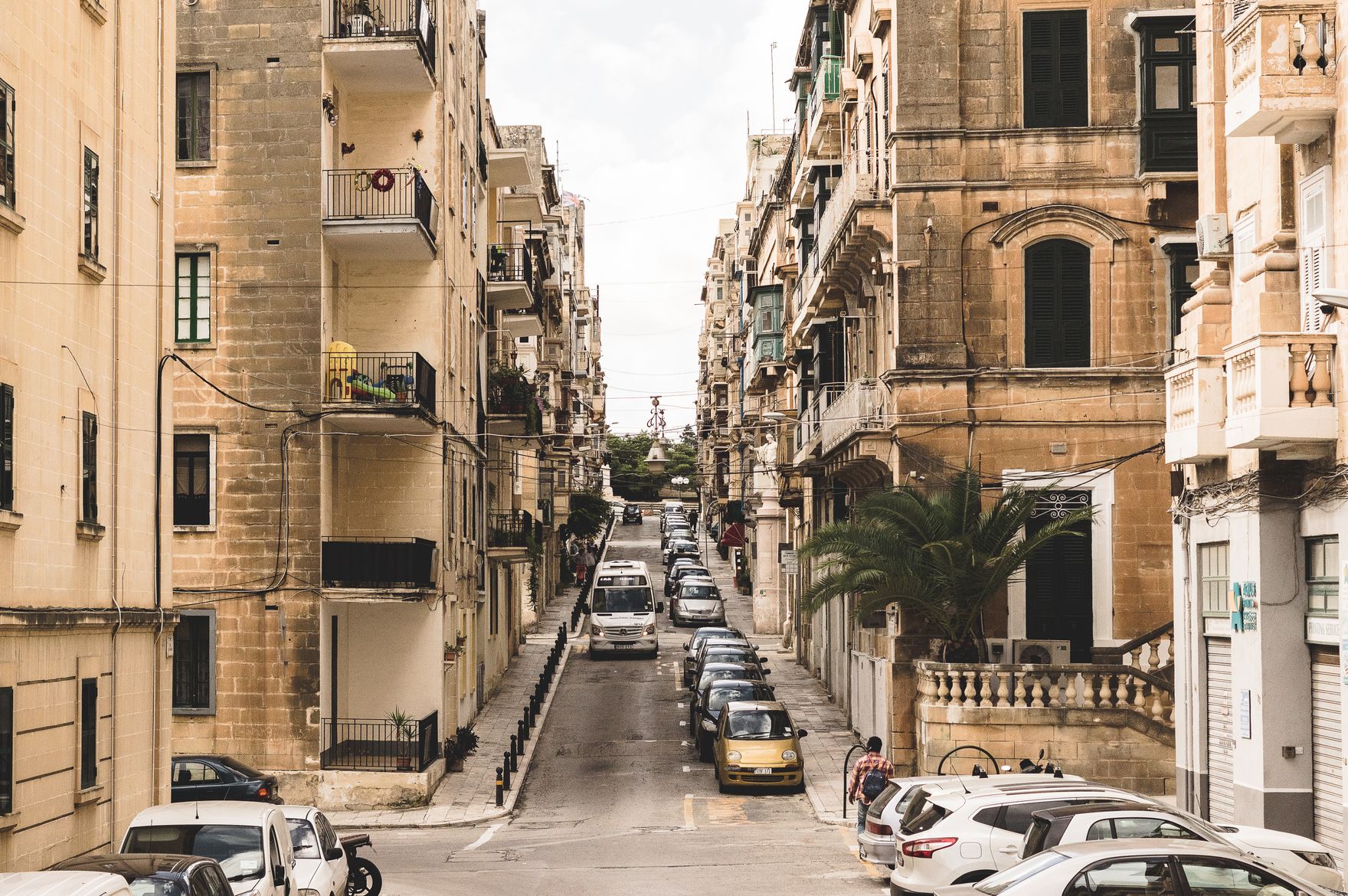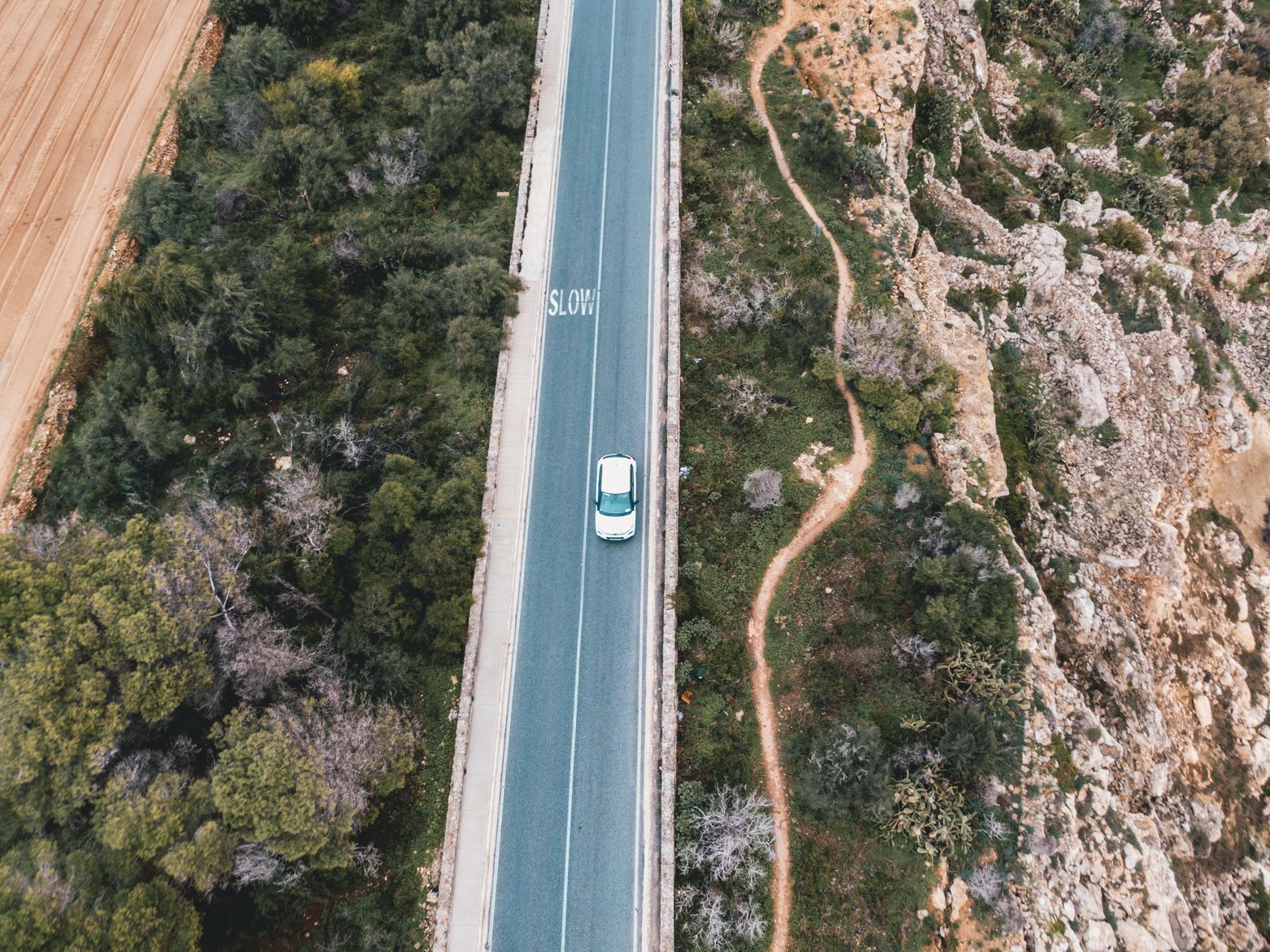Malta Traffic Guide
Getting Around Safely in Malta
Malta is a small archipelago in the Mediterranean, roughly the size of the city of Bremen. Most of the country's attractions can be reached using public transport. However, for those who prefer more flexibility, exploring the country by car is also an option.
In this guide, you will learn what to consider when driving in Malta. What are the traffic rules? What are the road conditions like? And how accessible are the Maltese islands by car? Find out the answers to these questions and more in the following guide.
Overview of Malta's Traffic Rules
- In Malta, you can drive a car from the age of 18 with an EU driver's license.
- Traffic in Malta drives on the left-hand side. Consequently, you overtake other cars on the right, and roundabouts are navigated clockwise. However, the right-before-left rule applies at unmarked intersections.
- The speed limit within urban areas is 50 km/h, and the maximum speed outside urban areas is 80 km/h.
- There are no expressways or motorways on any of the Maltese islands.
- All vehicle occupants must wear seat belts while the vehicle is in motion. Mobile phone use by the driver is only permitted with a hands-free system.
- A warning triangle and a first aid kit must be present in the vehicle.
- The alcohol limit for drivers in Malta is relatively high at 0.8 per mille, but the Maltese penalty catalog imposes exceptionally high fines for exceeding this limit.
- Parking regulations in Malta are indicated by colored lines on the ground. White lines denote parking spaces. Parking and stopping are prohibited within yellow lines. Blue line parking spaces can be used by anyone from 7 am to 7 pm, and by residents at other times. Green line parking spaces are reserved exclusively for residents.
Driving in Malta
The Roads in Malta
The island of Malta is characterized by its rocky, arid landscape. Outside of larger towns, the roads are not always in the best condition due to the natural terrain. Drivers should be prepared for potholes and narrow lanes.

Especially in blind curves and bottlenecks, it is crucial to adhere to driving on the left to avoid oncoming traffic. Additionally, the Foreign Office warns of sometimes poor street lighting.
In Malta's cities, the roads are generally in good condition. However, driving can be very challenging due to the left-hand traffic and extremely high traffic volumes.
Reports suggest that drivers in Malta are known for their chaotic driving style. In the dense city traffic, there is a heightened risk of rear-end collisions or parking accidents, which occasionally involve hit-and-run incidents.
Petrol stations and charging points
Petrol and Diesel: Fuel costs in Malta are generally lower than in most other European countries. There are plenty of petrol stations on the car-dense island, especially in the cities where refueling is easily accessible. Since the main island of Malta is only about 30 kilometers long, a petrol station is usually within easy reach.
However, it is important to note that petrol stations in Malta do not operate 24/7. Most petrol stations are open from Monday to Saturday and close by 6 PM at the latest. Those needing to refuel on a Sunday or late in the evening can use one of the increasingly common self-service petrol stations.

Electric Cars: Electric vehicles are becoming increasingly popular in Malta. With some planning and the right charging apps, it is perfectly feasible to explore the islands with an electric car.
Public charging stations for electric vehicles can be found in Malta's larger cities such as Valletta, Sliema, and St. Julian's, as well as along major roads. Hotels and tourist facilities also often provide charging options for their guests. Charging stations are even available on the smaller island of Gozo.
Hydrogen Cars: Currently, there are no hydrogen fuel stations on Malta, Gozo, or Comino. Therefore, it is not advisable to visit Malta with a hydrogen-powered vehicle.
Rental car or own car?
It is theoretically possible to reach Malta by ferry with your own car. However, there is no direct connection from the European mainland to Malta. The easiest way to get to Malta by car is to take a ferry from Genoa, Italy to Sicily, and then another ferry to Valletta, Malta. The German vehicle registration is sufficient as proof of liability insurance, but carrying the International Insurance Card is still recommended.
Another challenge of travelling to Malta with your own car is the left-hand traffic on the island. Those accustomed to right-hand traffic from the European mainland may need some time to adjust. This adjustment is further complicated if your own vehicle is configured for right-hand traffic.
It is significantly easier to navigate the island with a rental car that is designed for left-hand traffic. Rental cars are readily available in cities and at the airport in Malta. To rent a vehicle, you must be at least 21 years old. Some rental companies only rent vehicles to people over 25.
The Foreign Office warns that in the past, rental car companies have often charged for damages caused by previous renters. It is therefore advised to document any pre-existing damage at the time of vehicle pick-up and to request a handover protocol.
Fines
Traffic offenses in Malta generally incur moderately high fines. However, penalties for alcohol-related offenses are particularly severe. For driving under the influence of alcohol, the minimum fine is 1,200 euros. Penalties for drug offenses are even higher, with serious cases potentially leading to long prison sentences.

Fines in Malta are approximately as follows:
- Speeding (over 20 km/h above the limit): from 70 Euros (approx. £60)
- Seatbelt violation: from 25 Euros (approx. £20)
- Driving under the influence of alcohol: from 1,200 Euros (approx. £1,030)
- Using a mobile phone while driving: 100 Euros (approx. £85)
- Running a red light: 250 Euros (approx. £210)
- Parking violation: from 25 Euros (approx. £20)
Conclusion: Overcoming Challenges on Malta's Roads
A holiday in Malta can be navigated using public transport, your own car, or a rental car. Those planning to drive on the islands should be prepared for left-hand traffic, narrow roads, and heavy traffic congestion. Driving in Malta is challenging but allows you to explore the islands flexibly at your own pace.
► Here you can find more information about the toll regulations in Malta to ensure you are well-prepared for your trip.
